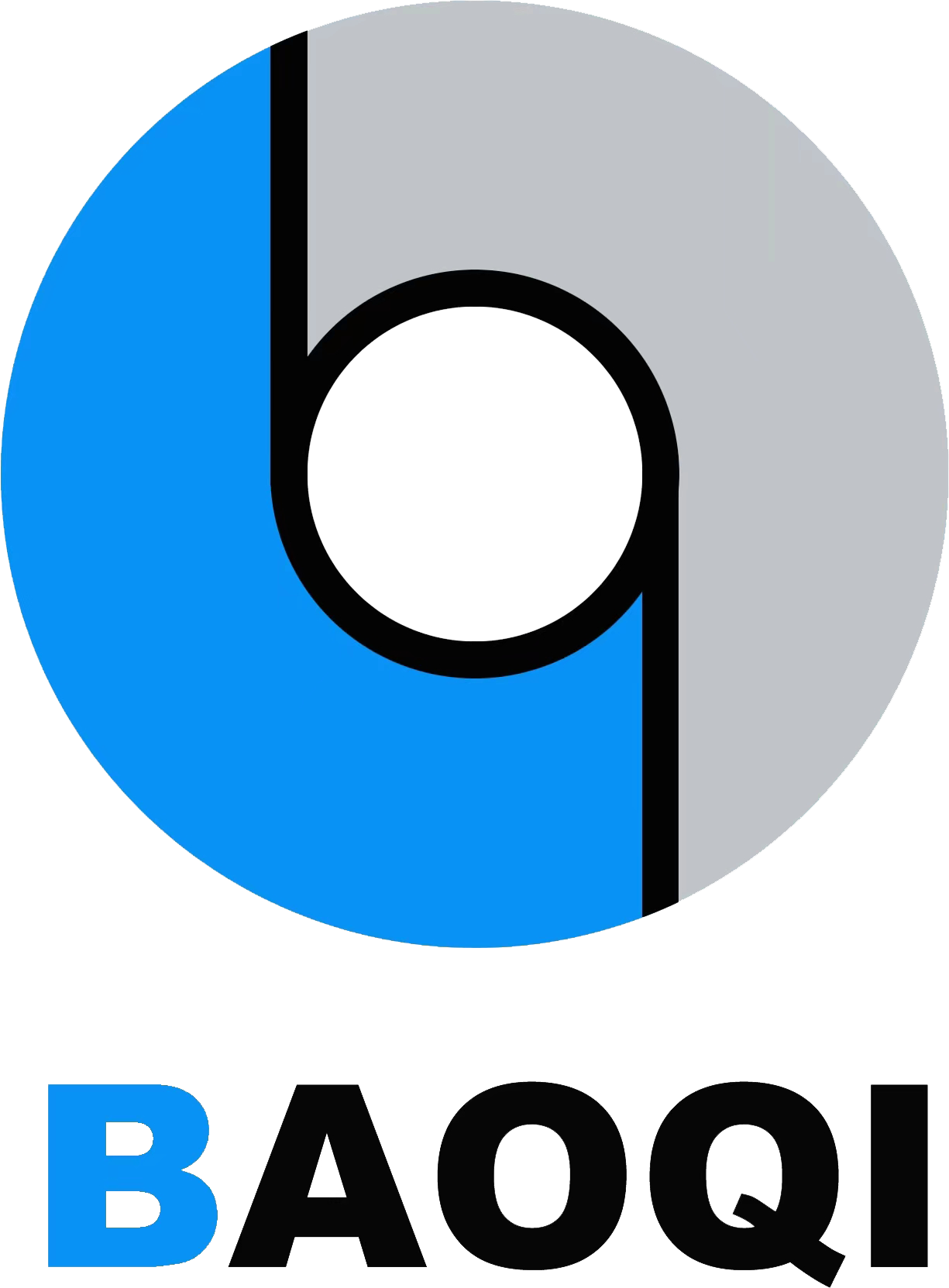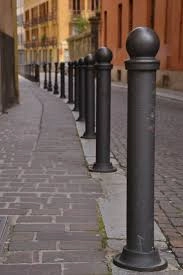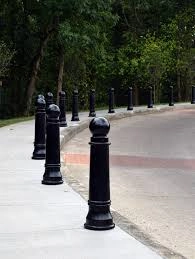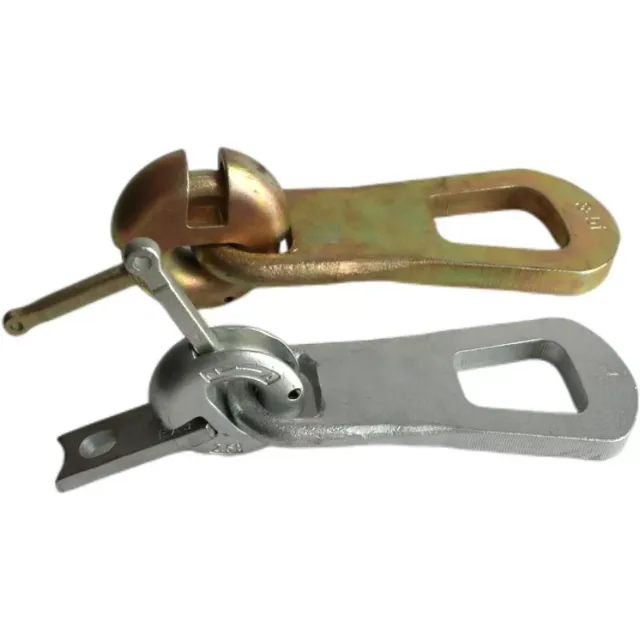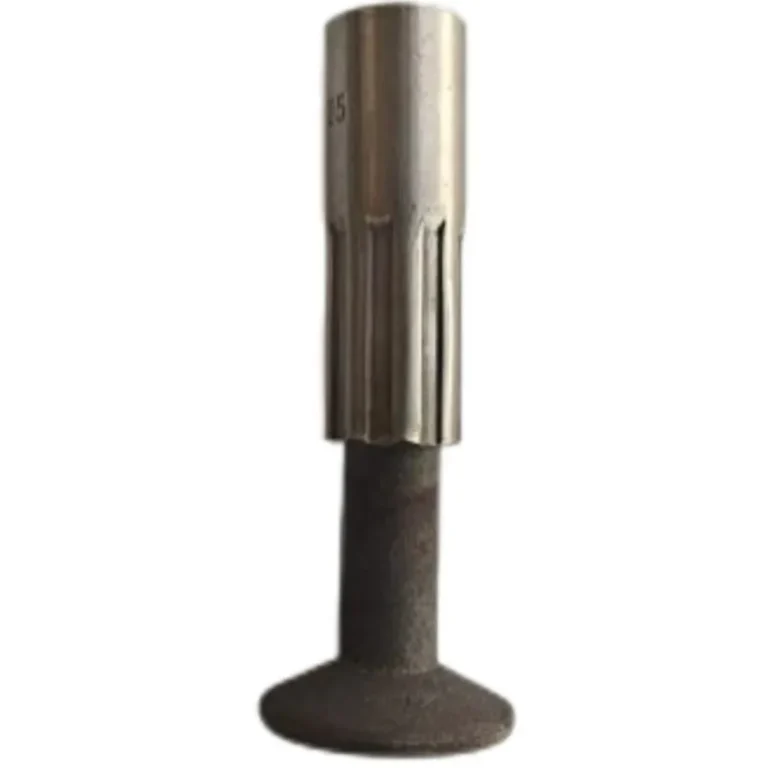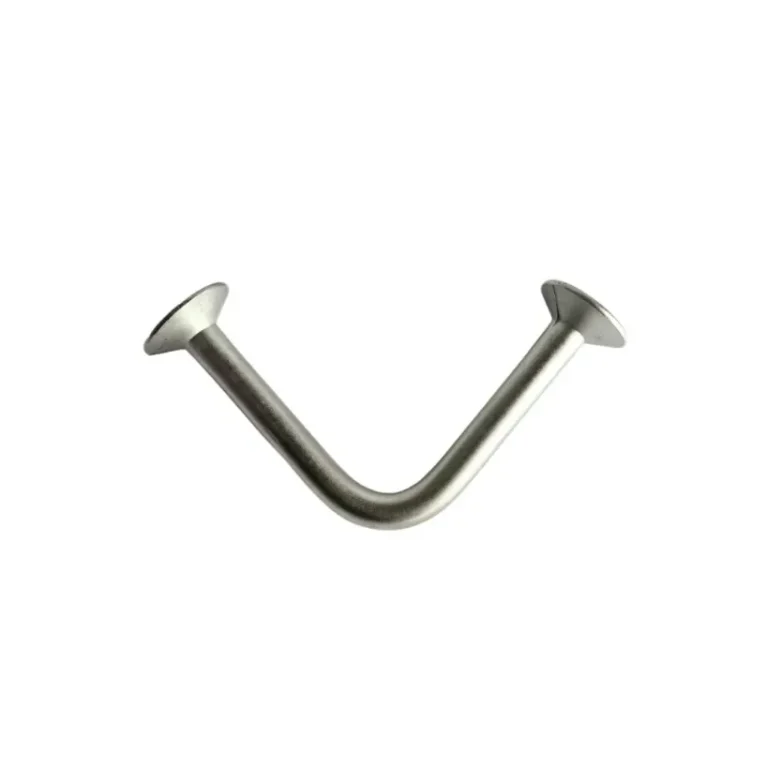Understanding Bollards
What is a Bollard?
A bollard is a sturdy, short post designed to manage or guide road traffic. Additionally, they can offer protection to buildings and pedestrians from vehicle collisions. Bollards have their roots in the maritime sector, where they were utilized to moor ships at dock. Over time, these structures have been adapted for numerous functional and decorative uses in urban design and security measures.
Different Types of Bollards
Bollards come in several different types to serve various needs. Fixed bollards are permanently installed and provide strong physical barriers. Retractable bollards can be lowered or removed to allow vehicle access when necessary. Decorative bollards focus on enhancing the aesthetic appeal of public spaces while still providing a degree of protection. Finally, removable bollards can be detached and relocated as needed, offering flexibility in urban design and event planning.
Introduction to BAOQI
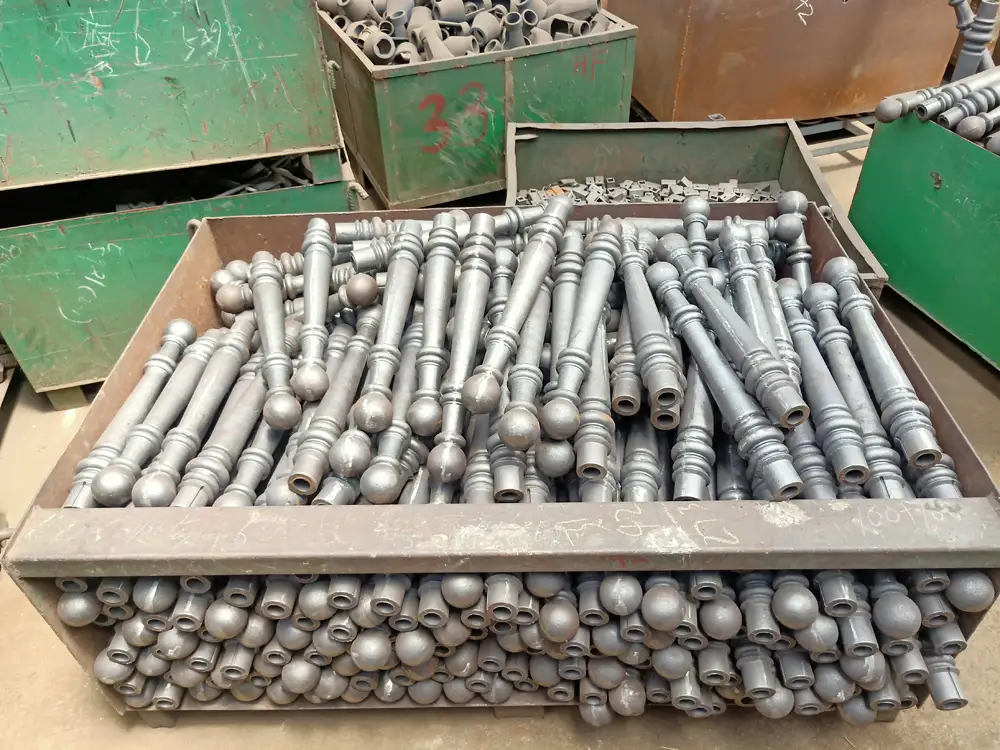
Overview of BAOQI Technologies
BAOQI Technologies specializes in the manufacturing of high-quality bollards. With a commitment to innovation and advanced engineering, BAOQI has established itself as a leader in the industry.
Commitment to Quality and Innovation
BAOQI is committed to delivering the highest standards of quality in every bollard they manufacture. Their dedication to continuous innovation ensures that they remain at the forefront of industry advancements. By investing in state-of-the-art technology and skilled personnel, BAOQI aims to provide reliable and effective solutions to their customers.
The Materials Used in Bollard Manufacturing
Types of Steel and Metal Alloys
Selecting the right materials for manufacturing bollards is essential. High-grade steel and various metal alloys are frequently chosen for their durability and strength. Stainless steel is particularly preferred because of its resistance to corrosion and long-lasting nature, which makes it suitable for outdoor use. Additionally, carbon steel can be used due to its strength and cost-efficiency.
Importance of Material Selection
Selecting the right materials is crucial for ensuring the bollard’s performance and longevity. The type of material chosen impacts the bollard’s ability to withstand environmental conditions, resist impacts, and provide security. Specific materials are selected based on the functional requirements of the bollard, such as the need for high-impact resistance in security bollards or aesthetic considerations in decorative bollards.
The Design and Engineering Process
Conceptual Design
Initial Sketches
The design process begins with initial sketches that outline the basic shape and features of the bollard. These sketches serve as a preliminary framework that guides further development. They allow designers to explore various concepts and streamline the creative process.
Software Modeling
Once initial sketches are approved, software modeling tools come into play. Advanced CAD (Computer-Aided Design) software is used to create detailed 3D models of the bollard. These models provide precise dimensions and allow designers to visualize the bollard from different angles, facilitating better design decisions and modifications.
Engineering Specifications
Load-Bearing Capacity An essential aspect of the engineering process is determining the load-bearing capacity of the bollard. This involves calculating the forces and impacts the bollard is expected to endure. Various simulations and tests are conducted to ensure that the bollard meets the required safety and performance standards.
Environmental Considerations
Environmental factors play a significant role in the engineering specifications of a bollard. Depending on its installation location, the bollard might need to withstand harsh weather conditions, such as extreme temperatures or corrosive environments. Engineers must account for these variables to ensure the bollard’s durability and optimal performance.
Fabrication and Construction Process
Cutting and Shaping the Material
Laser Cutting Technology
Laser cutting is employed to accurately cut the material into the desired shapes and sizes. This technology offers high precision and efficiency, reducing material waste and ensuring consistent quality in every bollard component.
Machining Techniques
Subsequent machining techniques, such as milling and drilling, are used to refine the bollard components. These processes ensure that every piece fits perfectly during assembly, maintaining the structural integrity and performance of the finished product.
Welding and Assembly
Welding Techniques Different welding techniques, such as MIG and TIG welding, are employed to fuse the bollard parts together. Experienced welders make certain that every joint is robust and reliable, enhancing the bollard’s overall strength and steadiness.
Component Assembly
The final step in the manufacturing process is the assembly of all components. This involves fitting together the cut and machined parts and securing them through welding or bolting. Quality control measures are applied at each stage to ensure the bollard meets all design and safety specifications.
By understanding each step in the manufacturing process, from initial design to final assembly, it becomes clear how much expertise and precision go into creating a high-quality bollard. Companies like BAOQI Technologies exemplify these meticulous processes, guaranteeing their products are both reliable and innovative.
Surface Treatment and Finishing
Corrosion Protection Methods
Galvanization
One of the primary methods for protecting a bollard from corrosion is galvanization. This process involves coating the metal surface with a layer of zinc. The zinc acts as a barrier against environmental factors such as moisture and oxygen, which can cause rust. Hot-dip galvanization, in particular, ensures that the zinc coating is uniformly applied to the entire surface, including hard-to-reach areas. This significantly extends the lifespan of the bollard, making it a cost-effective solution for outdoor installations.
Powder Coating
Another highly effective method for corrosion protection is powder coating. This technique differs from traditional liquid paint as it involves applying a dry powder to the metal surface. The powder is then cured under heat, resulting in a hard and durable finish. Compared to paint, powder coating offers a thicker protective layer, which enhances resistance to chipping, scratching, and weathering. Additionally, this method is versatile, allowing for various colors and textures that contribute to the bollard’s overall aesthetics.
Aesthetic Finishes
Painting Options
For those looking to add a touch of color and style to their bollard, painting offers numerous options. High-quality paints designed for metal surfaces provide an attractive finish while also offering a layer of protection against the elements. Choices range from specific hues that match urban decor to special reflective paints that improve visibility at night. Paint applications can be tailored to the unique needs of each project, helping to integrate the bollard seamlessly into its surroundings.
Decorative Elements
In addition to painting, decorative elements can be incorporated into the design of a bollard to enhance its visual appeal. These can include features such as ornamental caps, intricate cut-out patterns, and textured finishes. These decorative touches not only make the bollard stand out but also help it blend into various architectural landscapes. Custom designs can be created to match specific aesthetic requirements, adding a layer of elegance and sophistication to public spaces.
Quality Assurance and Testing
Structural Integrity Tests
Impact Resistance
Ensuring that each bollard can withstand impacts is crucial for its functional performance. Impact resistance tests simulate real-world scenarios where the bollard might encounter vehicular crashes or heavy objects. By measuring how well the bollard absorbs and dissipates energy, engineers can assess its capacity to protect pedestrians and property. These tests are vital in verifying that the bollard meets safety and regulatory standards.
Load Testing
Load testing plays a crucial role in quality assurance. This process involves subjecting the bollard to controlled loads to verify its capability to withstand expected operational stresses. These stresses include vertical loads from vehicles or any attached accessories, as well as lateral forces resulting from impacts. Through load testing, manufacturers can validate the bollard’s structural integrity and reliability, ensuring it performs effectively under diverse conditions.
Safety Standards Compliance
Compliance with safety standards is non-negotiable in the manufacturing of bollards. These standards, often set by regulatory bodies, ensure that the bollard meets the necessary criteria for safety and performance. Regular audits and inspections are conducted to verify compliance, covering aspects such as material quality, design accuracy, and manufacturing processes. Maintaining adherence to these standards assures customers that the bollards supplied by BAOQI Technologies are both safe and dependable.
Packaging and Shipping Preparation
Protective Packaging Solutions
Once a bollard is manufactured, it must be packaged carefully to prevent damage during transportation. Protective packaging solutions include the use of durable materials such as foam inserts, bubble wrap, and sturdy cardboard boxes. These measures help cushion the bollard against shocks and vibrations during shipping. Proper labeling and secure strapping further ensure that the product arrives at its destination in perfect condition, ready for installation.
Logistics and Delivery Coordination
Efficient logistics and delivery coordination are crucial for timely deliveries. This involves meticulous planning to manage the transportation of the bollard from the manufacturing facility to the customer’s location. Coordination with reliable shipping partners and real-time tracking systems helps manage delivery schedules and address any logistical challenges. By ensuring smooth and timely delivery processes, BAOQI Technologies upholds its commitment to customer satisfaction.
Application and Installation Strategies
Common Use Cases for Bollards
Urban Planning
In urban planning, bollards are crucial in creating pedestrian-friendly environments. They serve to define pathways, limit vehicle access to specific areas, and improve the safety of public spaces overall. By incorporating bollards into streetscapes, infrastructure such as bike lanes, sidewalks, and parks is protected, aiding in sustainable and organized urban development.
Traffic Management
Bollards are equally essential in traffic management strategies. They are used to control vehicle flow, create physical barriers at intersections, and protect sensitive areas such as pedestrian crossings and school zones. By providing clear demarcation and physical reinforcement, bollards assist in regulating traffic speed and improving road safety, ultimately reducing the risk of accidents.
Future Trends in Bollard Manufacturing Technologies
The future of bollard manufacturing is set to be shaped by advancements in technology and materials science. Innovations such as smart bollards equipped with sensors and communication devices are on the horizon. These intelligent solutions can provide real-time data on traffic patterns and environmental conditions, enhancing their functionality in urban settings. Additionally, ongoing research into sustainable materials and eco-friendly manufacturing processes will likely lead to more environmentally conscious bollard production techniques, aligning with global sustainability goals.
As exemplified by BAOQI Technologies, the meticulous process of manufacturing a high-quality bollard involves numerous steps, from design and material selection to final assembly and testing. By adhering to stringent standards and embracing innovation, BAOQI ensures that their bollards meet the diverse needs of modern infrastructure while maintaining superior quality and reliability.
